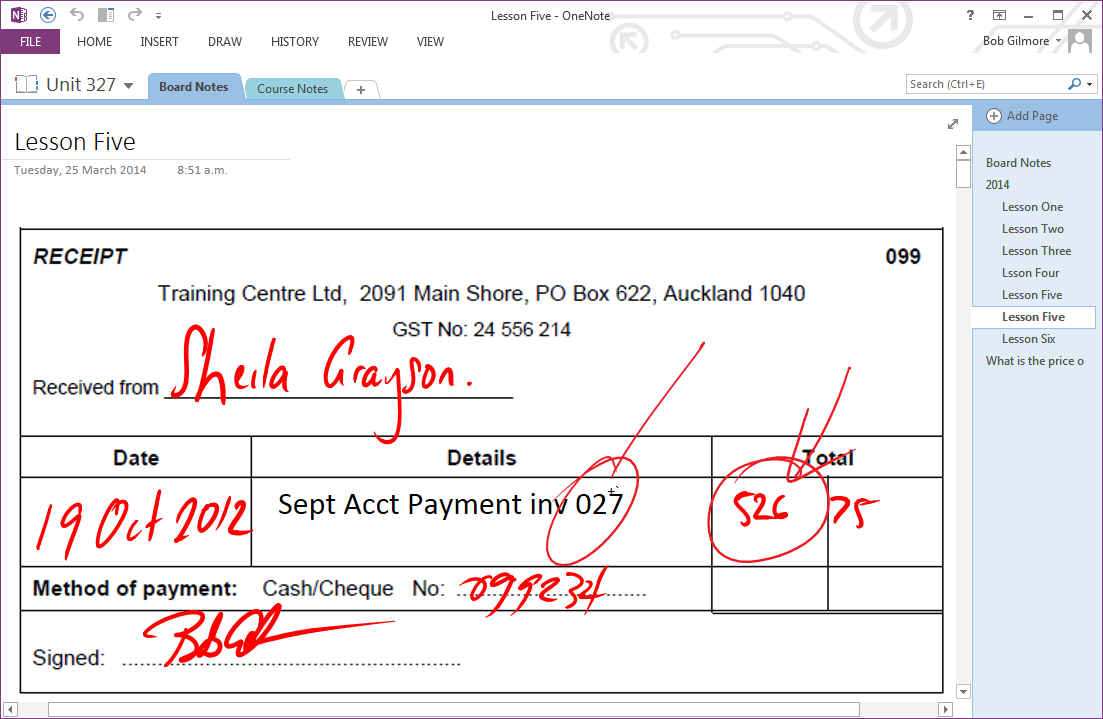Blog entry by Bob Gilmore
As my students and colleagues will know, I am a huge user of Microsoft OneNote.
- I use it as a tool on the smart board for putting notes and diagrams.
- For Inking those notes and diagrams to point out important parts.
- For organising and sorting all my class notes, videos, articles, attached files, etc

Example of OneNote inking a receipt example for the level 2 unit 327 - Business Documents.
Because I'm such a prolific user of the tool, and because almost all my classes are taught in a computer lab, I've recommended my students take notes in OneNote too.
Learning from lectures and labs
I have always been concerned that making course material more available via on-line tools ironically makes a student less likely to actually make use of it. Exercises can be ignored (and often, in my experience, are), reading often isn't even looked at. Learners often need clearly defined tasks and goals.
As such I make students take notes in class and mix it with exercises, reading, videos, etc. However often these notes are duplicated electronically on this Moodle site, which is the Virtual Learning Environment for Tai Poutini.I worry over students just deciding not to bother taking notes as they are on-line and then not absorbing the material.
I have two conflicting desires for my on-line content:
- All my course content is available on-line. This is especially important as we have several distance and part-time learners.
- My students need to take their own notes so as to help them learn and so I often throw titbits out in the lectures which are not on Moodle to encourage them to take notes.
These two things do not go together!
We're also in the habit now of videoing each lesson, usually via Google+ hangouts so students who are away can join in. This makes all of the content that doesn't make it to Moodle directly available via the video.
Handwriting and learning
There have been interesting studies published about how handwriting vs typing affects the brain and how this might be a huge impactor on students learning.
Long story short: Handwriting uses more of the brain than typing.
Now correlation is not causation and so using more of the brain doesn't necessarily mean better learning. It could be that, for example, more motor functions are triggered by writing. However several ancillary studies do suggest exactly that: handwriting is better for learning for kids.
Technology is coming along quickly. Inking in applications is much more of a thing that it was even last year. Devices like the Galaxy Note with its S-Pen, the Wacom pens available, etc. make it possible to write directly onto your devices. Windows 7 and 8's handwriting recognition is superb. This blog post is entirely handwritten, for example. Blame any mistakes on the software!
So maybe in the future, we can combine the best of both words. The ease of organisation, edit, storage and recovery of a software application with the cogitative benefits these studies find in handwriting.
Additional article:
Nice summary from Lifehacker here: http://lifehacker.com/5738093/why-you-learn-more-effectively-by-writing-than-typing